It’s been a lively start to the year in the world of social media.
From TikTok’s uncertain status in the US to new ways for Instagram to support student safety and connect audiences across platforms, there’s been plenty to unpack.
Whether you’re managing social channels in higher ed or just looking to stay on top of what’s next, this spring round-up from our team brings you the key stories, and what they might mean for your marketing and social media strategy.
1. Deadline extended for TikTok in the US
The US government has extended the deadline by another 75 days to keep TikTok running in the US whilst negotiations continue.
The US government is reportedly seeking bidders who can still operate as partners for the app on US soil.
In a statement last Friday, ByteDance (the Chinese owner of TikTok) said it had been in discussion with the Trump administration, but "an agreement has not be executed. There are key matters to be resolved. Any agreement will be subject to approval under Chinese law."
Congress passed a law last year forcing TikTok to either divest or sell its assets in the US.
The decision relates to concerns over how it gathers user data and how it could be used to distribute communications from other nations.
For now, its reported 170 million users in the US can continue to use the app, but watch this space.
2. Deeper integration of Instagram and WhatsApp
Instagram has launched a new sticker feature enabling users to link directly to private WhatsApp groups.
The integration enables viewers to tap on the sticker within an Instagram Story and initiate a conversation on WhatsApp without any additional steps.
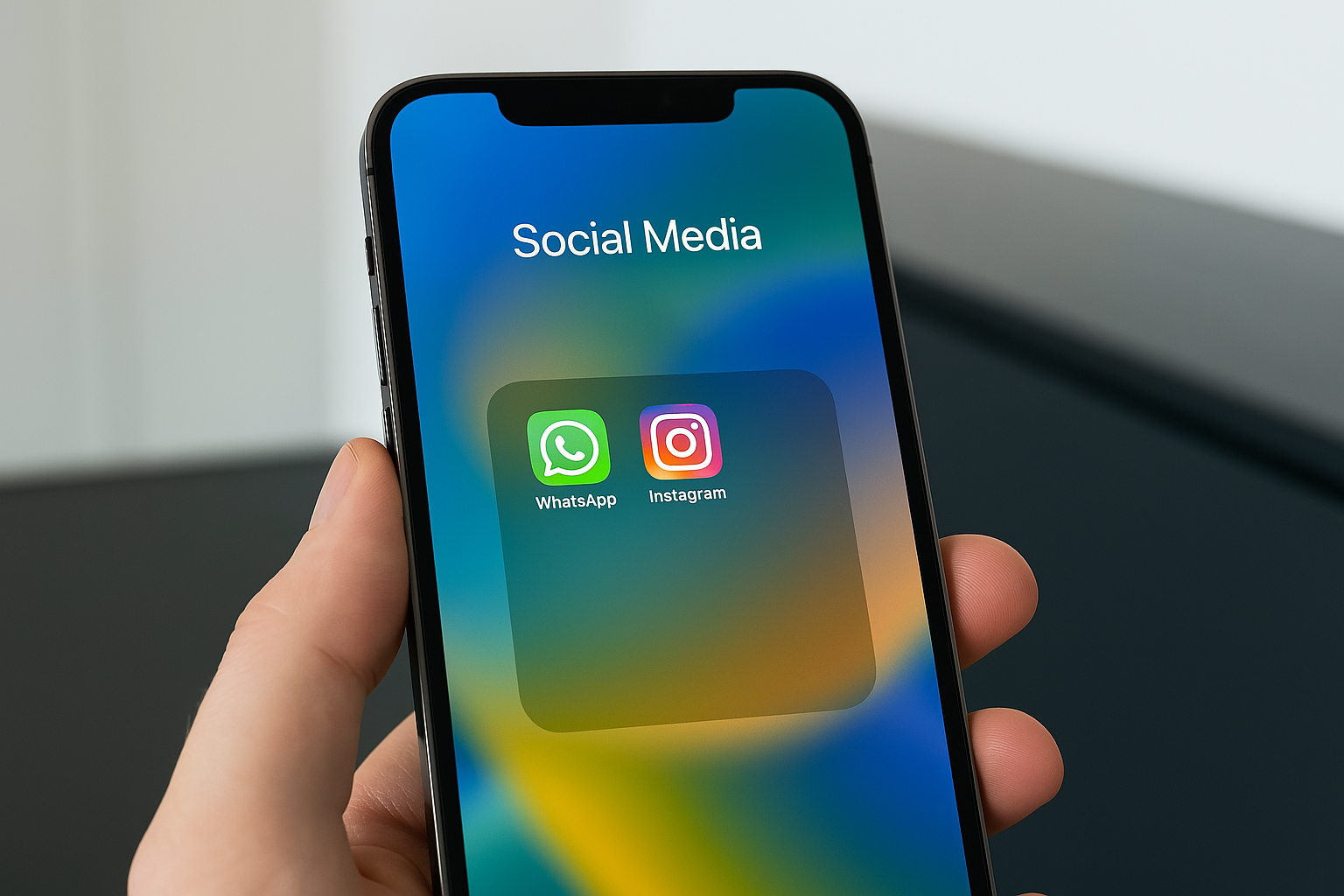
3. Instagram launches Schools Partnership Program to protect teenagers
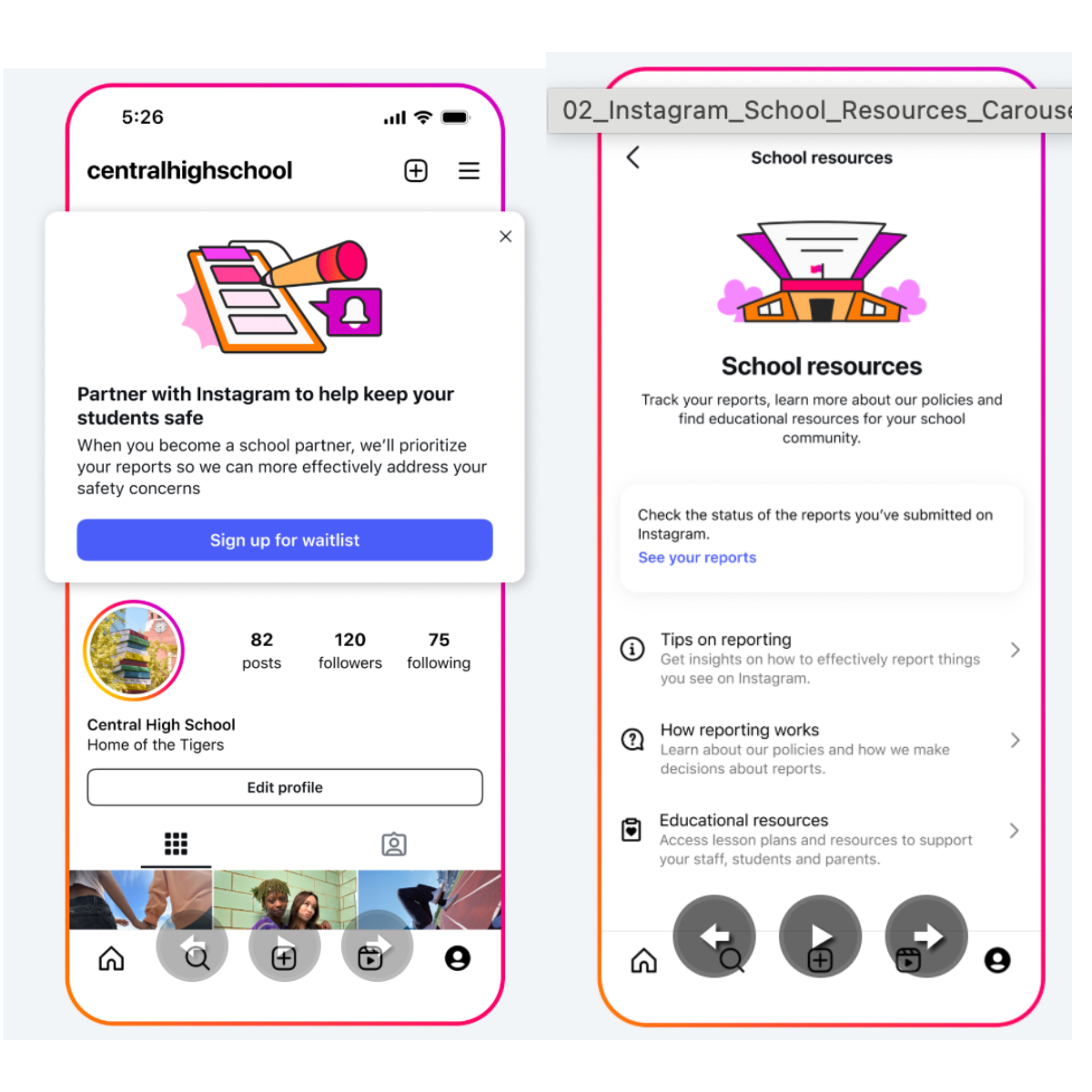
Instagram is rolling out a new Program aimed at helping educators report teenager safety issues directly.
The School Partnership Program pilot is open to all US middle and high schools and could roll out across further countries and other education environments such as colleges and universities if the early promising results continue.
Schools that sign up to become partners receive prioritized reporting, status updates, and notifications on actions taken as well as educational resources to help educators, parents, guardians, and students to use Instagram safely.
The move follows the introduction of Teen Accounts, designed to give parents peace of mind that their children have safe, age-relevant experiences, with additional built-in protection turned on to limit unwanted contact and inappropriate content.
4. Pinterest labels AI-generated images

Pinterest has started labeling AI-generated and AI-edited images, following concerns around the proliferation of AI content in the app.
The new labels are automatically created based on photo metadata and appear in the bottom-left corner of images to help users identify computer-generated content.
5. Run your LinkedIn live video content via Zoom
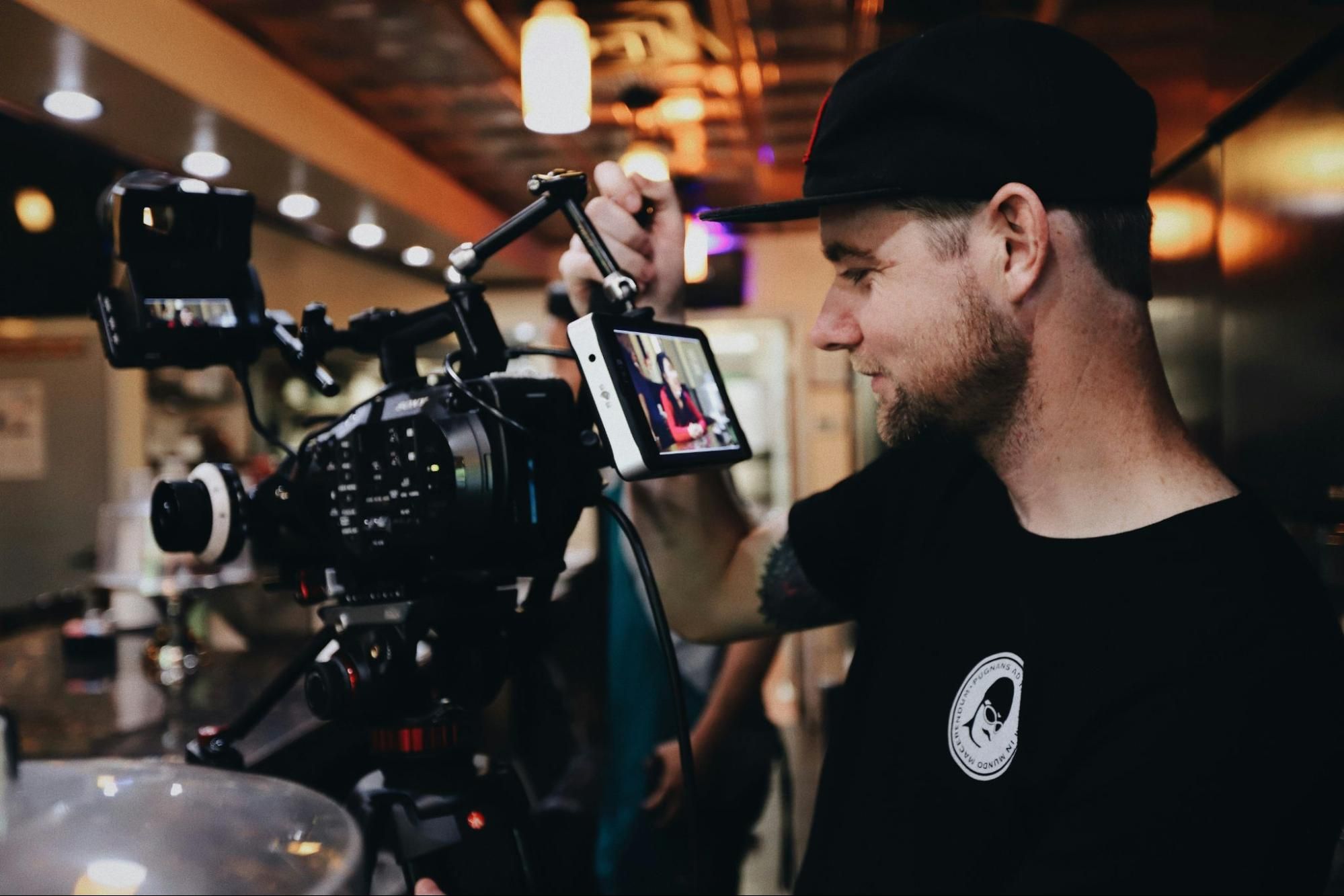
Video viewing time increased by a third last year, and live video views increased by 15% on the platform over the winter.
And now, LinkedIn is making it a whole lot easier to live-stream content by enabling you to link your Zoom video content directly through to the app.
The link-up could make it more convenient to live-stream events, guest lectures, Open Day or Campus Tour initiatives, and more, all using Zoom.
6. Bluesky expands video uploads and messaging
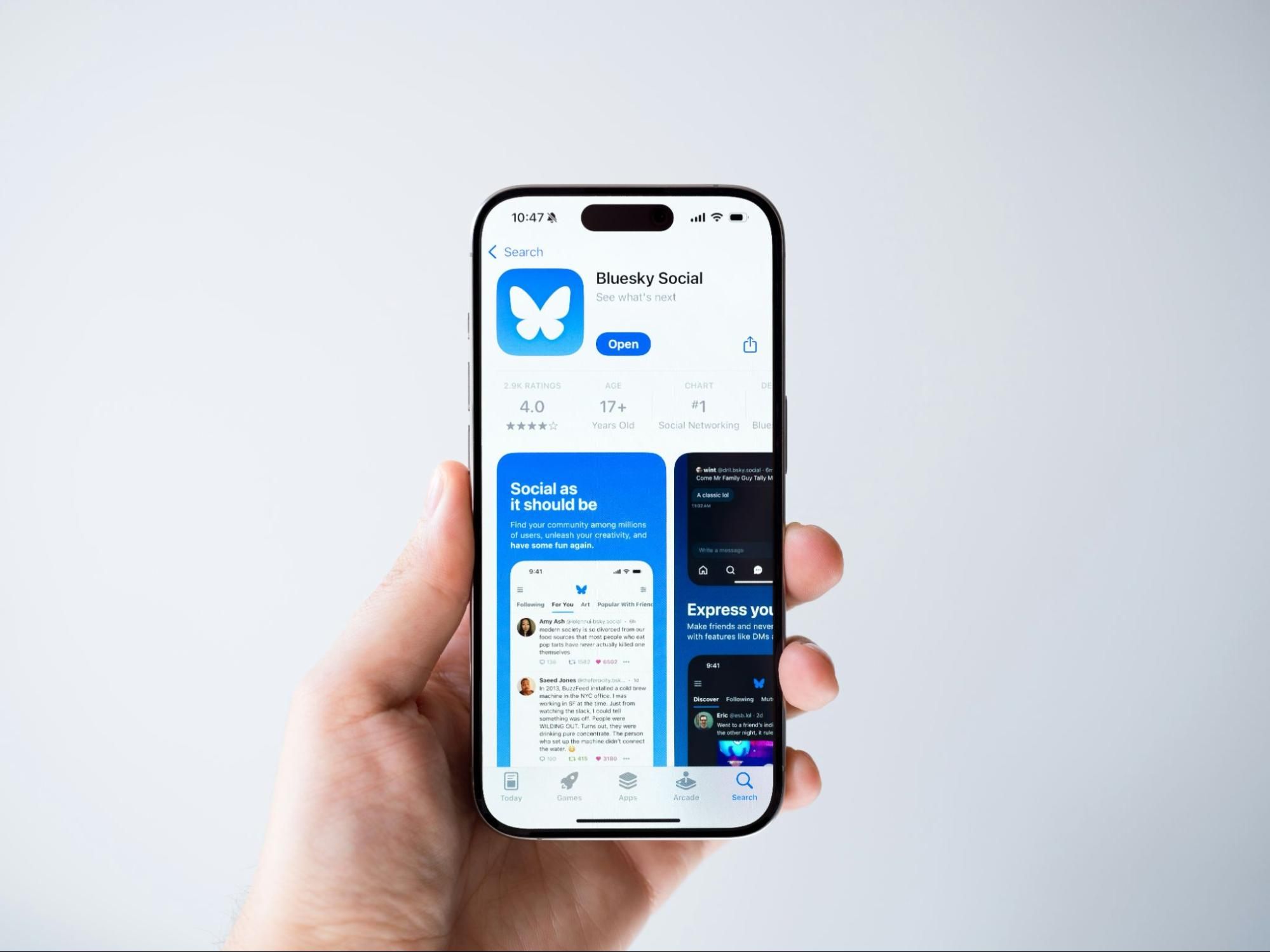
Bluesky now enables users to post videos up to three minutes long, an increase from the 60-second cap initially put in place.
This now exceeds the video support on X and Threads which allow for video of two minutes, 20 seconds, and five minutes, respectively.
7. Instagram close to launching Blend

Instagram is moving closer to launching a new messaging feature that creates a shared Reels feed for users and their friends, called Blend.
Instead of individual clips being sent between users, Blend will pull together AI-recommended Reels based on both users’ activity and will adapt over time based on what Reels users both watch and share.
The feature has been in testing for over twelve months and roll-out looks likely later this year.
8. The best time to post on social media in 2025
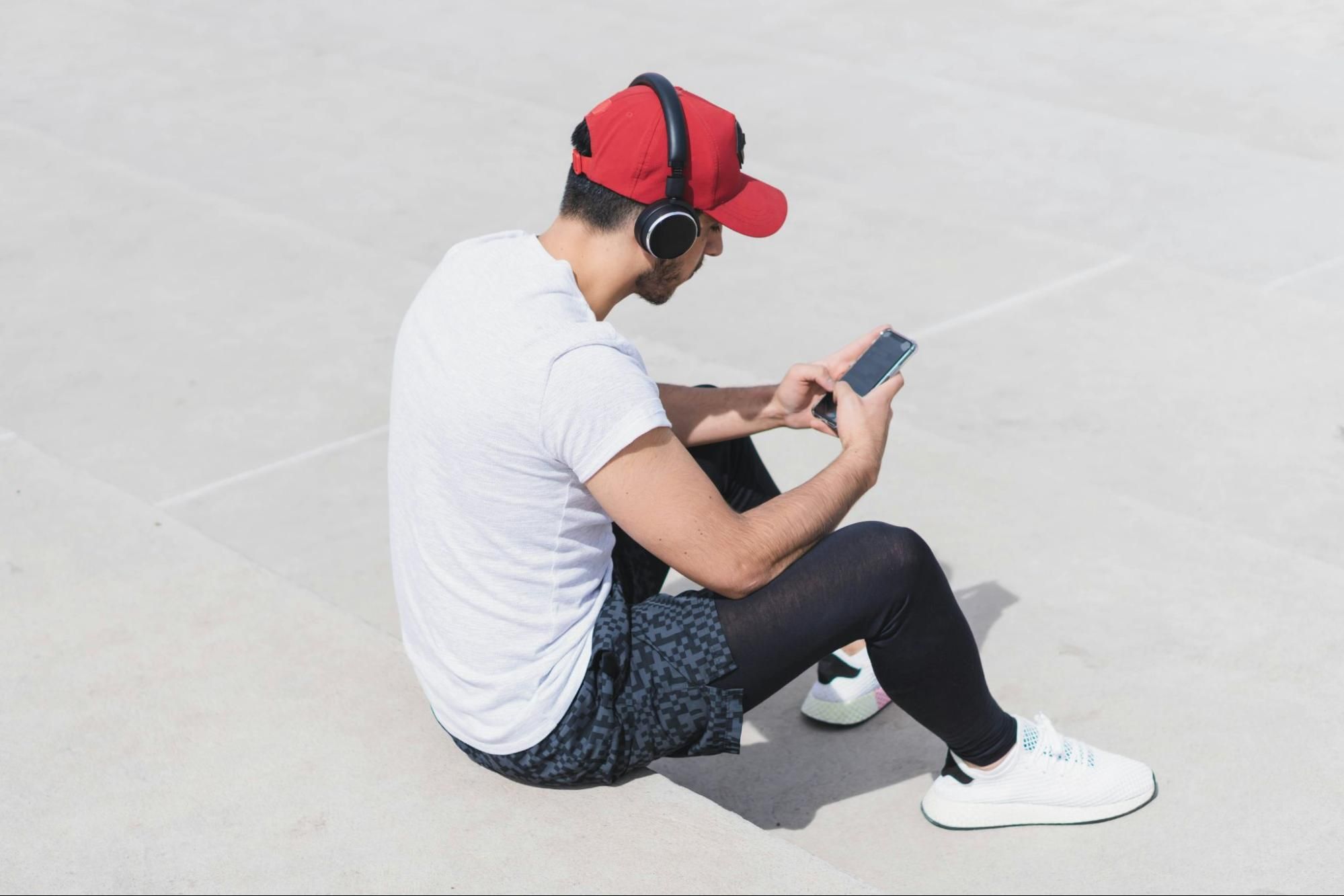
Sprout Social has published its latest guide covering the best times to publish content on social media, based on insights from nearly 2.5 billion engagements, across 600,000 social profiles, looking at when different apps get the most engagement.
Overall, they found the best times to post are generally Monday to Thursday between 10 a.m. and 1 p.m. The best day to post on social media was a Wednesday.
The worst day to post was found to be Sundays.
Looking more specifically at platforms, Facebook and Instagram appear to have the highest engagement in the mornings, LinkedIn during midday, TikTok from the afternoon into early evening, and YouTube at 1pm.
9. X shares insights into how Gen Z are using the app
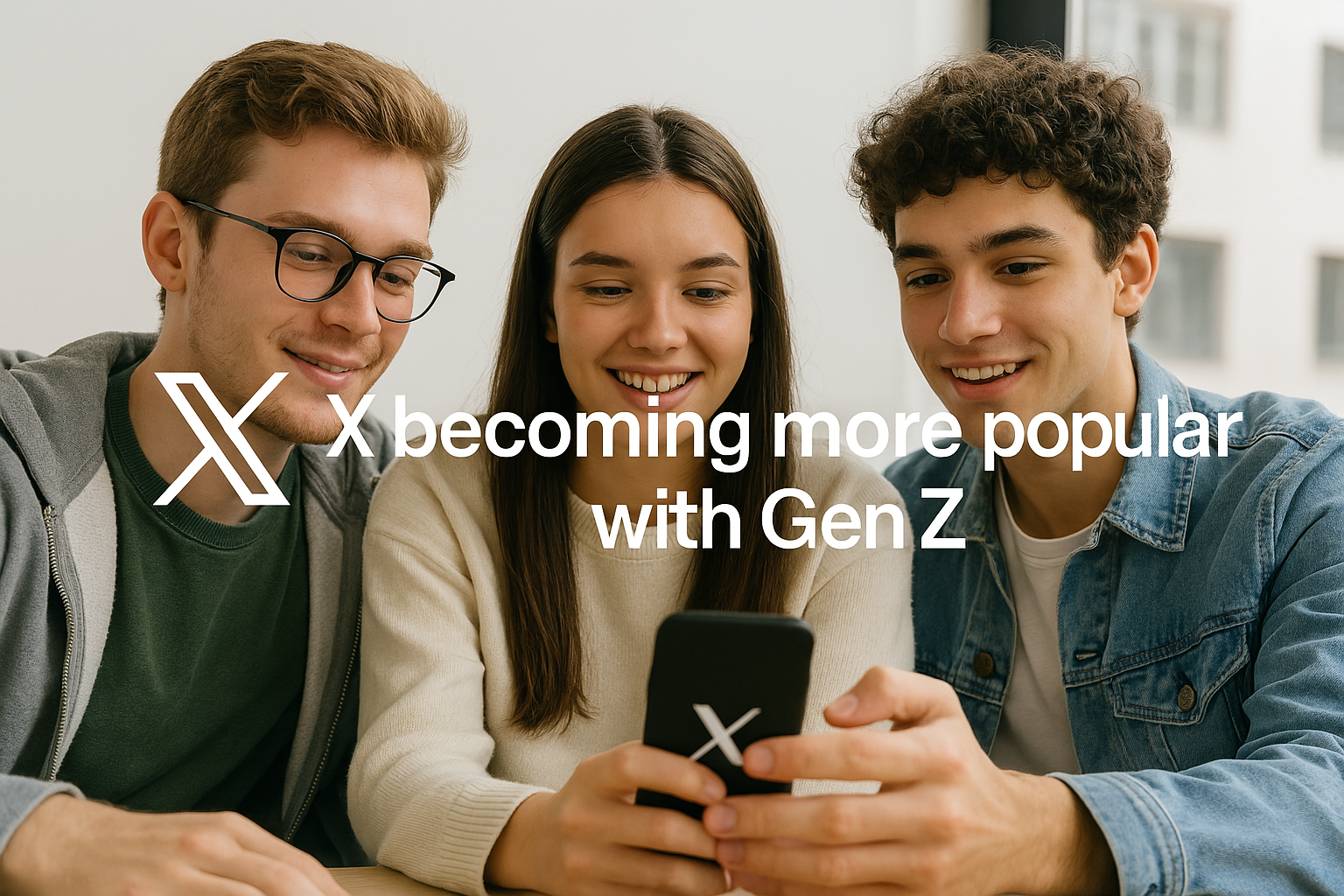
X claims to have "captured the attention of Gen Z, reeling in millions of influential users drawn to brands rooted in authenticity and immediacy.
X states that 31% of its users are Gen Z’ers (born 1997-2012) and that there has been an 8% increase year on year in this age group using the app.
They claim that Gen Z are increasingly turning to X as the go-to platform for viral trends and cultural moments with other indicators including X’s immersive video feed which has gained a large Gen Z following.
10. The University of Limerick leaves X
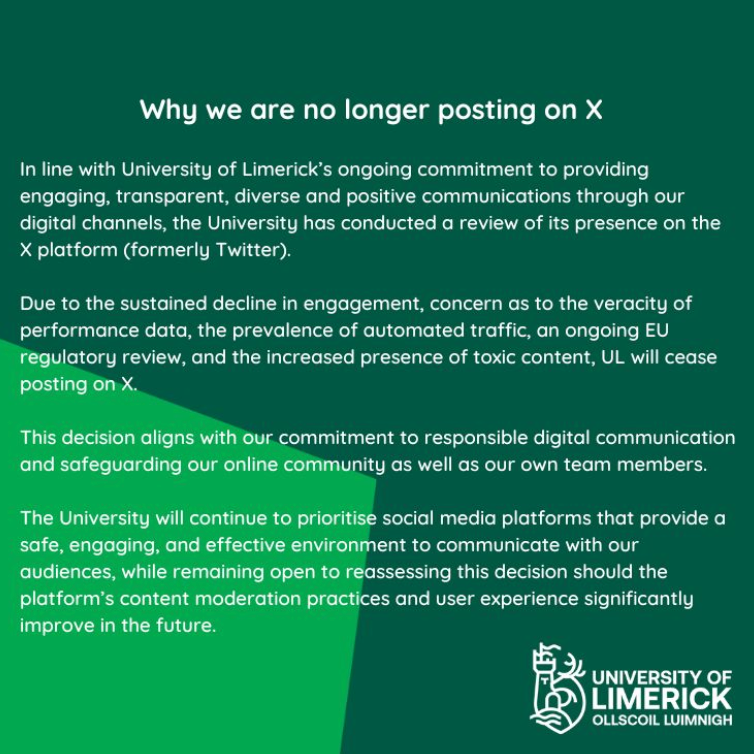
Despite X’s Gen Z announcement, could there be a university X-odus on the way?
The University of Limerick, for example, ceased posting on X in March and has instead moved to sharing news and research on Bluesky.
Will other universities be adding Bluesky to their social media channels or moving across to it from X?
What do you make of the social media developments emerging this spring?
Will your institution remain on X or look to alternatives such as Bluesky?
And how do you see TikTok’s future in the US playing out?
We'd love to hear your thoughts in the comments below or, of course, on social media.

:format()//media/Spring-2025-social-media-update-for-higher-education-RQ.png)